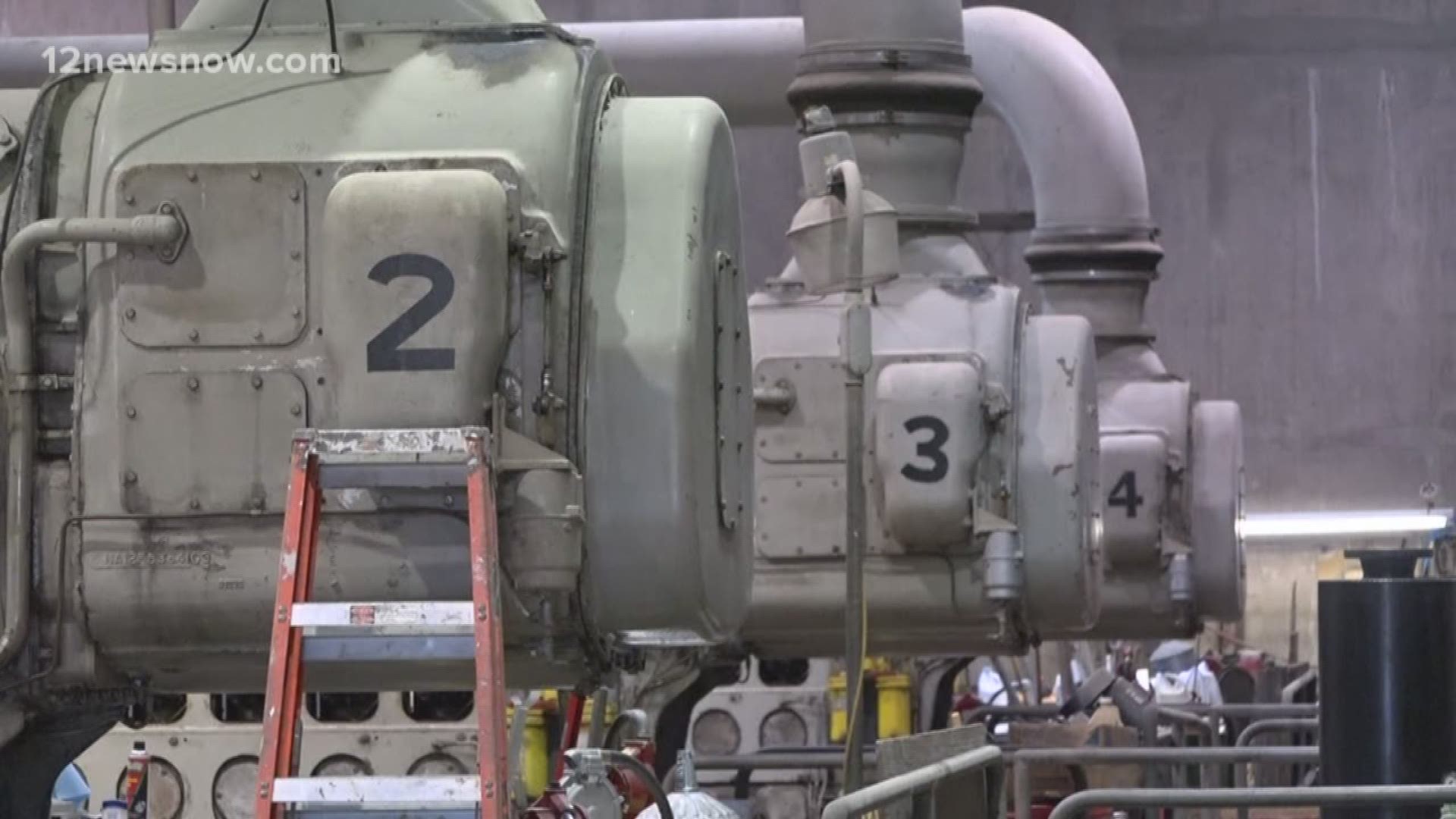PORT ARTHUR — A year ago tonight the worst of Harvey hadn't quite hit Southeast Texas. We never dreamed catastrophic flooding would put tens of thousands of homes under water.
The lingering storm exposed how vulnerable our drainage system is, and a year later, the conversation continues about what should be done to improve it before the next big storm.
The drainage test no one wanted
Walk up to anyone in SETX, and they'll tell you how horrible that night was.
"It was hopefully a once in a lifetime event," Drainage District No. 7 Supervisor Ronnie Hollier recalled.
"The water just kept coming up and up and up. Port Arthur has never seen anything like that," said civil engineer Ron Arceneaux.
"I've been here. I grew up here, and I've been through all of these storms -- Rita, Ike, all of these storms, even Carla did not have an impact on me," admitted Dr. Sam Monroe, retired Lamar State College Port Arthur President. Like so many, Harvey would be different.
"I would be up at 2 or 3 o'clock in the morning, checking to see what was going on. All of our neighbors, we were in touch with everybody. Everybody was looking at the same situation," Monroe said.
Water was slowly creeping into their homes in Lake Arthur. "We wound up with 13 inches in our home. we left our home on that Tuesday night about 10 p.m. by boat. I locked the front door, and I left."
Monroe had no idea it'd be nearly a year before he and his wife could move back.
Debating what happened
Recently, Dr. Monroe helped moderate a discussion about improving drainage in Port Arthur and Mid County, and Jefferson County Drainage District No. 7 was front and center.
"I personally didn't think anything like that could happen, but obviously, never say never," recalled supervisor Ronnie Hollier.
The epic storm changed how he and his colleagues will prepare for future storms. Harvey forced them out of their main office on 9th Avenue. The water was so high, some workers at a pump station near the library couldn't be reached for three days. He says the system performed as it should have. It was never designed to clear channels and ditches of sixty inches of rain water.
"We have 20 pump stations. We have the capacity to pump about 8.2 million gallons per minute, and with everything running wide open, our system was inundated. We couldn't keep up," Hollier admitted.
Expansion underway
Long before Harvey hit Hollier and his colleagues had started work on an ambitious expansion to the district's Alligator Bayou Pumping Station, near Valero and Highway 82 in Port Arthur.
The district turned to money from the Hazard Mitigation Grant Project (HMGP). That money was approved after Ike with the feds covering 75% of the cost and DD7 covering 25%. The district's portion was $25 million. "We are paying our portion with our fund balance, and we issued debt in the form of maintenance notes in 2015 to ensure enough funding to complete the station," Hollier explained.
"When we know we have a big storm coming, we pump our system down to as low as we possibly can," Hollier said.
"It will have the ability to lower the channel's water surface in advance of a storm. If we get a 100 year type storm, the system should handle it," explained civil engineer and consultant Ron Arceneaux.
Once the extra pumps are online in 2019, crews will be able to lower the water in the drainage channels about three feet providing extra room for water in the system. "Our storm sewer system has water in it all the time. It's not ever dry," Arceneaux noted.
Many of the ditches and canals around Port Arthur always hold some water because the city is so close to sea level, and water from Mid County flows south. "All of it eventually ends up in Port Arthur... and the bath tub fills up basically," said Arceneaux.
There's talk of adding detention ponds to give rainwater places to go when the system backs up. While Harvey put the focus on drainage, Arceneaux offered this warning: "The biggest threat, in my opinion, is from storm surge. If our levee system were ever breached, there's maps showing the extent of how far the flooding would go. With a Cat 5 type storm that breaches the levee, water would be all the way up to I-10."
That's why the U.S. Army Corps of Engineers and DD7 have started looking at raising the existing 36 mile levee and adding more. The levee expansion would cost around $755 million, and the drainage district would have to sell bonds to cover its share, about $255 million. "They want to raise it a foot in certain areas and extend it a little farther north around the Port Neches area. We will need to sale a bond for the levee, it is very early in the process, we still have a lot of planning before we will be ready to present a bond package," said Hollier.
"I believe the Corps is the key to designing what needs to be done to correct this problem," Monroe said.
Back inside his rebuilt home, the Port Arthur leader believes there's support for long term improvements to the levee and the drainage system. "There are tens of billions of dollars invested in the oil and petrochemical industry that are absolutely critical to the continued existence of the United States," explained Monroe.
He says protecting that industry and the people of Port Arthur and Mid-County should be the priority. "I think there's plenty of incentive out there for people to be motivated to find these engineering solutions and implement them."
Putting the pain of Harvey behind may be impossible, but the search for solutions gives many hope -- hope that something can and eventually will be done to stop the next big storm.

